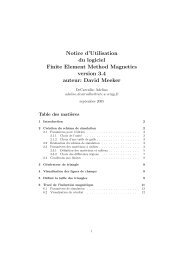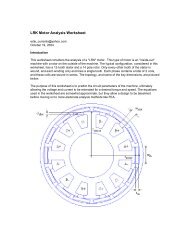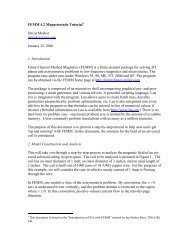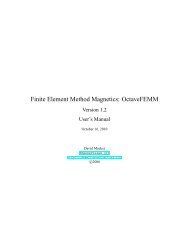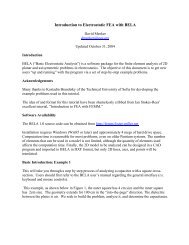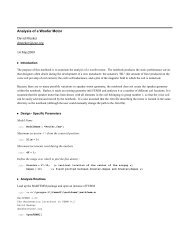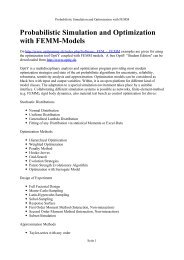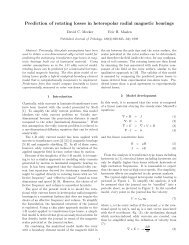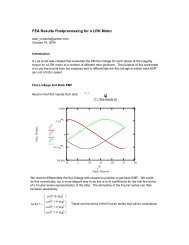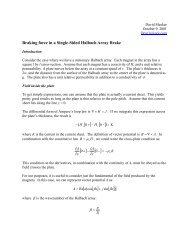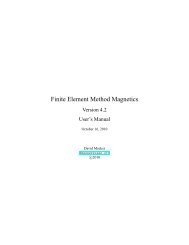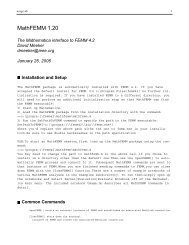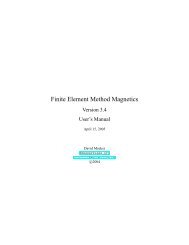Electrostatics Tutorial - Finite Element Method Magnetics
Electrostatics Tutorial - Finite Element Method Magnetics
Electrostatics Tutorial - Finite Element Method Magnetics
Create successful ePaper yourself
Turn your PDF publications into a flip-book with our unique Google optimized e-Paper software.
• How to run the postprocessor and display the resulting charge and voltage on each<br />
conductor.<br />
A completed version of this example problem is available as bdemo1.fee<br />
3. Additional Concepts: Capacitance Between Two Spheres<br />
You will now create a model of a capacitor consisting of two conducting spheres at equal and<br />
opposite voltages sitting in an unbounded region. This is an example of an axisymmetric system,<br />
and a special “open” boundary condition will be used to mimic the behavior of an unbounded<br />
domain.<br />
70.00<br />
25.00 R<br />
25.00 R<br />
Figure 4: Two conducting spheres.<br />
The arrangement of spheres is pictured in Figure 4. Two spheres, each 25 meters in diameter, are<br />
separated by a center-to-center distance of 70 meters. The top sphere is at a potential of 100<br />
Volts, and the bottom sphere is at a potential of -100 Volts.<br />
Due to symmetry considerations, only one sphere need be model. The line of symmetry between<br />
the two spheres is then fixed at 0 Volts to account for the effects of the second sphere.<br />
We will use the “Asymptotic Boundary Condition” method (as described in the Appendix to the<br />
FEMM manual) to mimic an unbounded geometry. To apply this boundary condition, the finite<br />
element problem domain must be spherical (or circular for a 2D planar problem). When finished<br />
the modeled domain will look as pictured in Figure 5.



